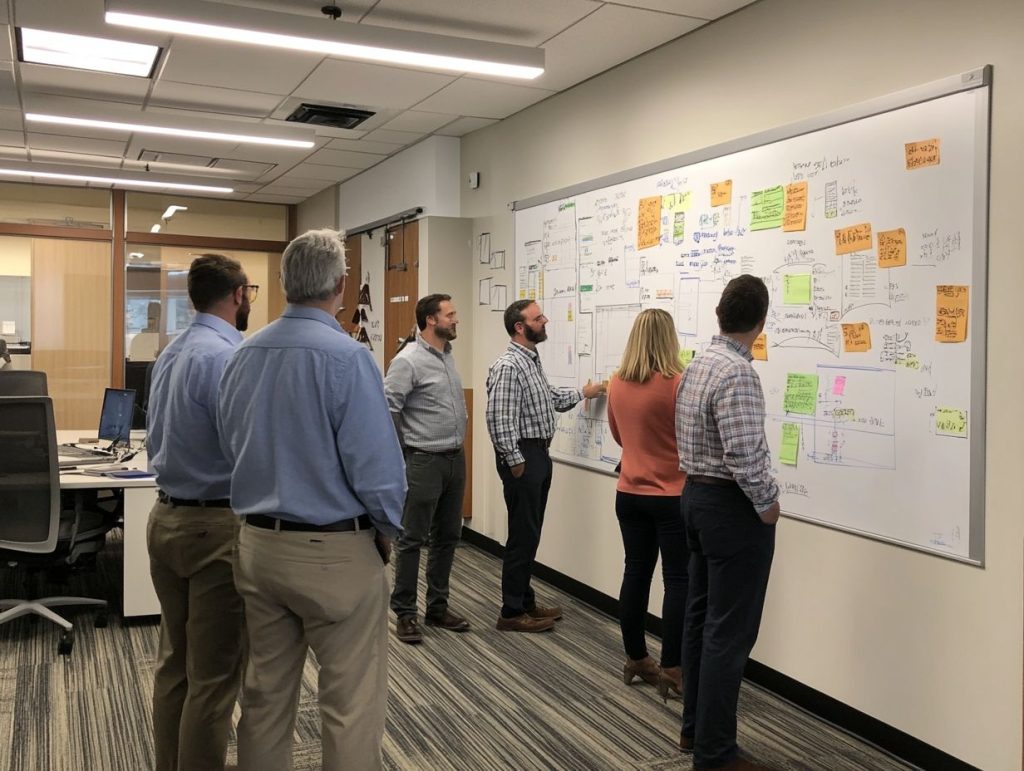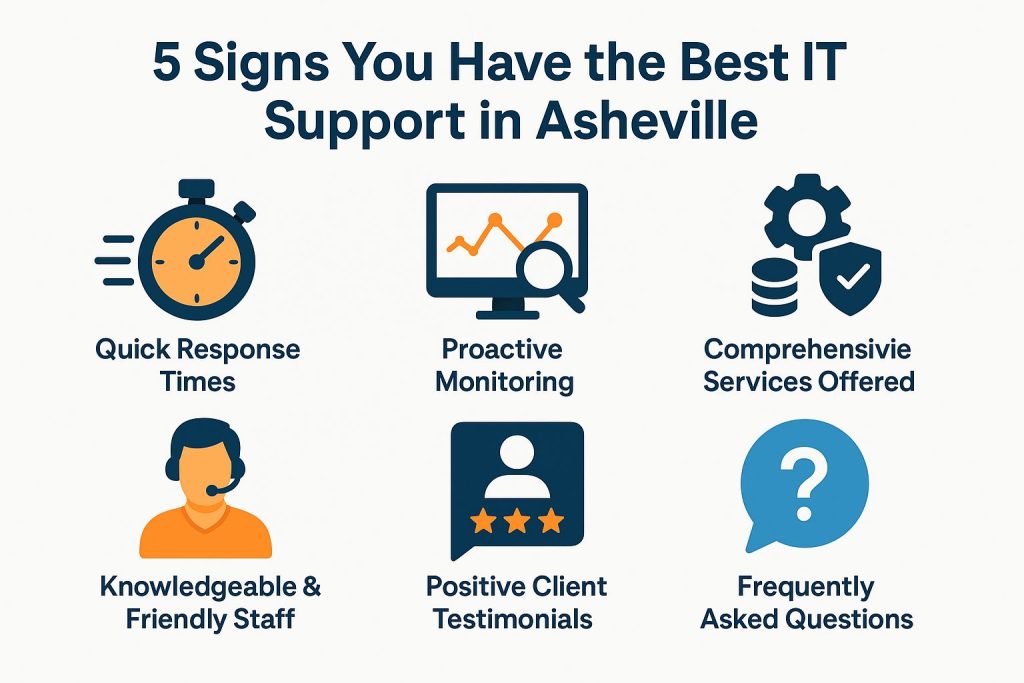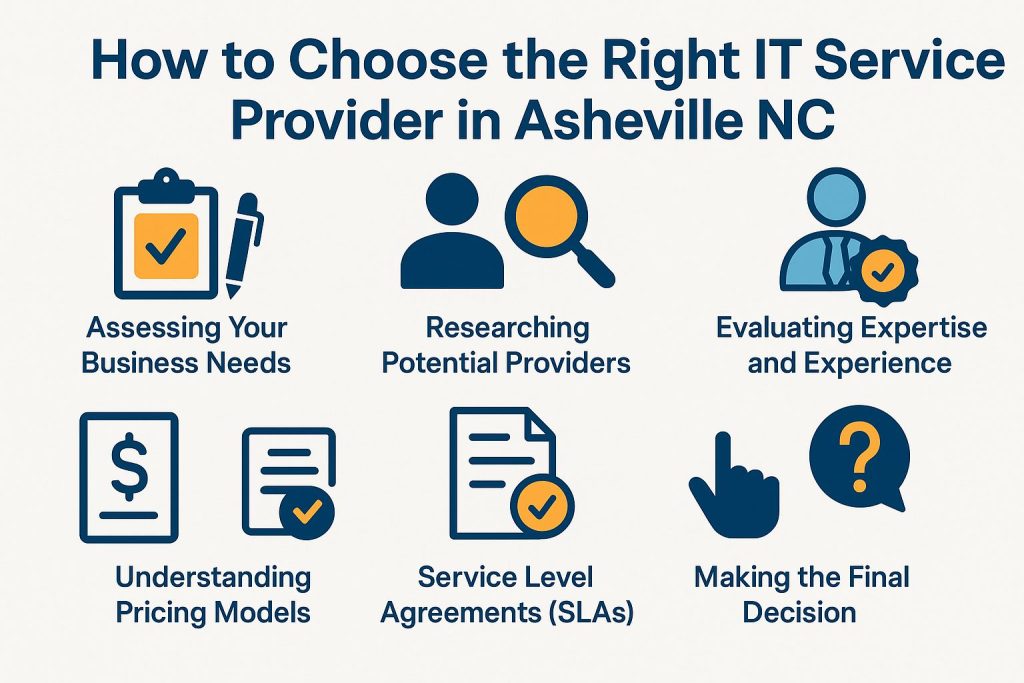Building a Resilient IT Framework for Asheville Enterprises

In today’s digital world, a strong IT framework is vital for Asheville businesses. Cyber threats and IT failures are constant risks. Understanding these consequences can be overwhelming. This article discusses the key parts of a strong IT framework. It includes important security measures and disaster recovery plans. Readers will learn how to strengthen their IT systems against disruptions and protect their businesses.
The Importance of a Resilient IT Framework
In today’s fast-changing technology world, a strong IT framework is essential for organizations, including those in Asheville. It maintains a solid IT infrastructure that supports business continuity and disaster recovery.
This strong IT framework must be solid and adaptable. It must keep up with growing cybersecurity threats, technology changes, and operational challenges.
Focusing on IT strategy, governance, and flexible methods helps businesses improve IT resilience and achieve growth.
A strong IT framework is the backbone of an organization’s digital transformation, especially as it aligns with the evolving . It helps improve performance, scale operations, use cloud computing, and allocate resources effectively.
Understanding the Risks and Consequences of IT Failure
Understanding the risks of IT failure is crucial for any organization. IT failures can cause operational risks, disrupt business continuity, and lead to legal issues.
Cybersecurity threats are always changing. Organizations must assess their weaknesses to effectively reduce risks. Not responding well to IT incidents can weaken customer trust and hurt business performance.
These risks can cause financial losses, regulatory fines, and damage to an organization’s reputation and compliance.
Businesses must have strong compliance and risk management frameworks to manage this complex environment. They should use best practices to protect their IT infrastructure.
Adopting industry standards strengthens defenses against cyber threats and ensures compliance with legal requirements. By seeing how cybersecurity, operational risk, and business continuity connect, leaders can create a complete IT strategy. This strategy will protect assets, enhance resilience, and promote long-term success.
Key Components of a Resilient IT Framework
A strong IT framework includes key components: effective IT service management, IT governance, network security, data management, and backup strategies.
These parts work together to protect IT infrastructure and reduce disruptions during incidents. Clear IT policies and training programs are important for creating a culture of resilience and proactive threat management.
By knowing these components, local businesses can align their technology with operational goals and improve engagement with stakeholders and the community. If you’re interested in how these components integrate to enhance business operations, consider exploring our detailed guide on Integrating IT Services.
Network and Data Security Measures
Strong network and data security is key to building a resilient IT framework against changing cybersecurity threats. Organizations must use complete cybersecurity frameworks. These should include data protection strategies and incident response plans to protect sensitive information.
Following local regulations strengthens these measures, helping businesses keep a strong security posture and protect their IT infrastructure from weaknesses. In addition to these basics, keeping a flexible approach to incident response is crucial. This means preparing for possible breaches and making sure teams are well-trained in the latest technologies and threats.
By aligning their data protection strategies with established compliance frameworks, organizations can effectively mitigate risks. This approach builds trust with clients and stakeholders. It also strengthens the integrity of operations.
Ultimately, fostering a culture of security awareness within the organization empowers employees to recognize and respond to potential threats, thereby strengthening the overall cybersecurity strategy.
Disaster Recovery and Business Continuity Plans

Disaster recovery and business continuity plans are essential components of IT resilience, enabling organizations to swiftly recover from disruptions while ensuring compliance with local regulations. These plans must be developed and tested regularly to ensure they work during an incident.
By adopting change management principles, local businesses can foster a culture of preparedness that minimizes downtime and enhances operational efficiency during crises.
Preparedness is proactive. It addresses challenges by assessing risks and identifying critical functions to protect. Organizations that prioritize these planning efforts are better equipped to navigate the complexities associated with unexpected events, ensuring not only a quick recovery but also the maintenance of stakeholder trust.
Aligning disaster recovery initiatives with compliance standards reinforces a company’s commitment to regulatory obligations, which positions them favorably during audits and evaluations. For a more detailed exploration of how organizations can adapt their IT infrastructure to support these initiatives, our comprehensive guide on the future of IT infrastructure in Asheville examines the evolving landscape. These strategies protect operations and drive growth. They allow teams to focus on core objectives without disruption.
Steps to Building a Resilient IT Framework
Building a resilient IT framework involves strategic steps. Start with assessing the current IT infrastructure, integrating systems, and identifying areas for improvement.
Organizations should prioritize performance optimization and scalability to ensure their IT solutions can adapt to evolving demands. Effective strategic planning is crucial for aligning IT initiatives with business objectives, empowering companies to use technology to drive innovation and improve operational effectiveness. Curious about how these strategies apply to specific industries, such as hospitality? Our analysis explains IT security compliance for Asheville’s hospitality industry.
Assessing Current IT Infrastructure and Identifying Weaknesses
Assessing the current IT infrastructure and identifying weaknesses is the first critical step in building a resilient IT framework. It lays the foundation for effective risk management.
Organizations are advised to conduct comprehensive IT audits and evaluate performance metrics to uncover scalability challenges and potential vulnerabilities within their systems. This analysis helps make informed choices to improve operational efficiency and optimize technology.
By implementing established risk management frameworks, such as NIST or ISO standards, local businesses can systematically identify and mitigate risks associated with their IT operations.
Regular reviews of performance metrics, including uptime, response times, and throughput, are essential for pinpointing areas that require improvement. Understanding potential scalability challenges equips organizations for future growth, ensuring their infrastructure can adapt seamlessly.
These assessments not only serve to protect against threats but also enhance overall service quality, user satisfaction, and align with best practices, ultimately contributing to business success in a competitive landscape.
Implementing Necessary Changes and Upgrades
Organizations must implement changes and upgrades to improve their IT resilience and support business objectives. This process involves adopting new technology and integrating systems to ensure compatibility with existing infrastructure. Effective IT support is critical in managing costs and ensuring successful project management throughout the upgrade process, thereby facilitating smoother transitions and minimizing disruptions.
To initiate this process, organizations should conduct a comprehensive assessment of their current systems to identify areas in need of improvement. This analysis must encompass both hardware and software components to accurately understand the specific needs of the business.
After the assessment, a technology adoption plan is important. It should outline clear objectives and timelines.
Implementing changes requires teamwork. Key stakeholders should be involved to promote open communication.
Training employees on new technologies is crucial. It helps achieve successful integration. During this transition, careful cost management is important. It helps prevent budget overruns. Good project management will track progress and address roadblocks quickly.
Regular Testing and Maintenance of IT Framework

Regularly testing and maintaining the IT framework is essential. They ensure resilience and effectiveness. This helps businesses use agile methodologies and digital transformation. By conducting routine evaluations and implementing proactive strategies, organizations can safeguard against potential system failures while simultaneously enhancing overall operational efficiency.
This proactive approach helps organizations stay ahead of threats. It uses cybersecurity measures and adapts to new technologies like cloud computing and virtualization. Performance benchmarking gives insights into current capabilities. It also identifies areas needing improvement.
Additionally, engaging the IT workforce in continuous learning is important. It helps maintain up-to-date skills in technology and software development. This creates a dynamic environment for innovation. This commitment to development empowers organizations to respond to challenges. It ensures growth and success.
Frequently Asked Questions
What is a resilient IT framework and why is it important for Asheville Enterprises, particularly in terms of business continuity and risk management?
A resilient IT framework includes policies, processes, and technologies. It ensures smooth operation and quick recovery of IT systems during disruptions. This is important for Asheville Enterprises. It minimizes downtime, ensures business continuity, and protects sensitive data.
What are the key components of a resilient IT framework?
The key components of a resilient IT framework include risk assessment and management, disaster recovery planning, backup and data protection, incident response, and the application of best practices in compliance and network security.
How can Asheville Enterprises assess and manage IT risks?

Asheville Enterprises can manage IT risks by doing regular risk assessments and audits. They should identify threats and vulnerabilities. Then implement controls to reduce those risks with support from IT consulting.
What is disaster recovery planning and why is it important for Asheville Enterprises?
Disaster recovery planning is essential for IT support. It is the process of creating a plan to restore IT systems after a disaster or disruption. It is important for Asheville Enterprises because it helps minimize downtime and ensure business continuity in the face of unexpected events.
How can Asheville Enterprises ensure the security and protection of its data?
Asheville Enterprises can ensure the security and protection of its data by implementing data backup and encryption, regularly testing and updating security measures, and providing training and education for employees on data protection best practices, including user training and knowledge sharing.
What should Asheville Enterprises do in the event of an IT incident or disaster?
If there is an IT incident or disaster, Asheville Enterprises should have a clear incident response plan. This plan includes steps for containing and resolving issues, communicating with stakeholders, and starting disaster recovery.




